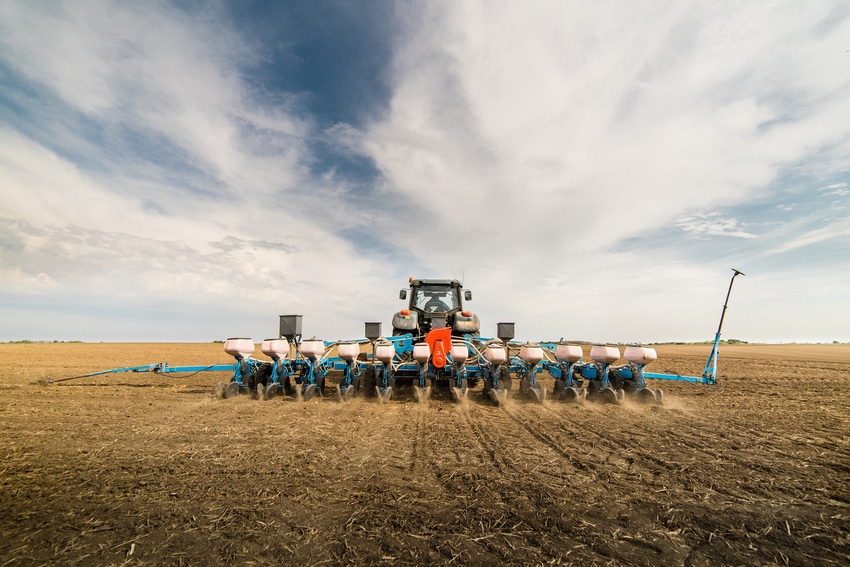
Like the start of a big race, or the beginning of a championship game, many farmers in southern Minnesota and northern Iowa initiated of full-scale field work during the week of April 20-26. Most farm operators across the region reported almost ideal planting conditions; however, rainfall in some areas slowed planting progress toward the end of the week. The 2020 planting season is a welcome relief from the difficult spring planting conditions that existed in both 2018 and 2019 across much of the upper Midwest. The favorable planting conditions also offer a nice stress relief for farmers dealing with low commodity prices, closures of ethanol and processing plants and prospects for greatly reduced farm profit levels in 2020.
Even though it may seem like crop producers are planting early compared to recent years, farmers are well within the USDA Risk Management Agency (RMA) guidelines to maintain full crop insurance coverage for the 2020 corn and soybean crop. April 11 the earliest corn planting date allowed by RMA to maintain full crop insurance protection in most of Minnesota and Iowa, while April 21 is the earliest planting date allowed for soybean planting.
Soil conditions this spring have been described as “almost ideal for corn planting” by farm operators and agronomists in many areas southern and western Minnesota. Assuming we can avoid significant amounts of precipitation in the next week or so, most crop producers in the region should be able to complete corn planting. Once corn planting is completed, many farmers will move directly into soybean planting, provided field conditions stay fit.
Optimal soil temperature
Soil temperatures were somewhat of a concern prior to April 24; however, the soil temperatures warmed up nicely by the week ending on April 26. At the University of Minnesota Research and Outreach Center near Waseca, the average 24-hour average soil temperature, as of the morning of April 27, was approximately 56 degrees at the 2-inch level and about 54 degrees F at the 4-inch level. Soil temperatures at this level are very desirable levels for quality corn planting conditions. These soil temperatures are slightly above the long-term average soil temperatures for late April at Waseca. A year ago, soil temperatures did not start warming up in mid-May.
Research shows that 50 percent corn emergence will occur in 20 days at an average soil temperature of 50 degrees F, which is reduced to only 10 days with an average soil temperature of 60 degrees F. The current soil temperatures certainly provide for favorable conditions for corn germination and seedling growth. The warmer soil temperatures are also favorable for the initiation of soybean planting, which usually does not occur until mid-May in many areas. Every year is different, and agronomists encourage producers to adjust to soil conditions and weather forecasts when making corn and soybean planting decisions.
Soil moisture levels
Most portions of southern Minnesota and northern Iowa were near capacity for stored soil moisture as we headed into the 2020 growing season. As a result, any significant rainfall events this Spring could result in very wet field conditions and potentially some planting delays, especially in poorly drained fields. Having adequate soil moisture should not be a problem for corn germination and emergence in most areas of the Upper Midwest; however, due to the warm temperatures and some strong winds, the top-soil in the seed zone can dry out quite rapidly. As a result, periodic moderate rainfalls during planting season, such as occurred in some areas this past weekend, can be beneficial for good seed germination and early season plant growth.
Yield increase?
Unless conditions turn very wet in the next couple of weeks, a large majority of corn in Minnesota should be planted before the end of April this year. Corn planting delays in 2018 and 2019 were significant, with a majority of the corn being planted in mid-to-late May. According to the USDA Weekly Planting Progress Report a year ago on April 29, 2019, only 2 percent of the corn in Minnesota had been planted, which was about 15 days behind normal. In portions on southwest and south-central Minnesota, conditions stayed wet until June, resulting in thousands of prevented plant acres and some of the lowest average corn yields in decades. Minnesota’s corn yield declined from record yield levels in 2015, 2016 and 2017 to 182 bushels per acre in 2018 and only 174 bushels per acre in 2019.
Historically, early planting of corn usually leads to higher-than-normal state average corn yields in Minnesota. In six of the eight years that 50 percent or more of the state’s corn acres have been planted in April, Minnesota has set a record corn yield. In 2015, corn planting in Minnesota was 83 percent completed by May 3, resulting in a record yield of 188 bushels per acre, which was followed with 89 percent of the corn planted by May 8 in 2016, again resulting in another record statewide corn yield of 193 bushels per acre. One exception was in 2017, when most of the Minnesota’s corn was planted in the first two weeks of May. Very favorable growing conditions throughout the year in most areas resulted in statewide record corn yield of 194 bushels per acre in 2017. The common denominator in the exceptional corn yield years in Minnesota has been that a majority of the state’s corn crop was planted by the end of April or in early May.
Once they have completed planting their corn acres, most farm operators are moving to soybean planting. A majority of soybean producers in southern Minnesota and northern Iowa strive to plant soybeans in early to mid-May; however, the ideal window to plant soybeans and still achieve optimum yields is much wider than with corn. The ideal soybean planting timeframe in most areas extends until about May 20 or slightly beyond, so there is still plenty of time to get the 2020 soybean crop planted. However, similar as with earlier corn planting dates, research does show that with favorable growing conditions, there is a yield advantage to planting soybeans in early May as opposed to late May.
About the Author(s)
You May Also Like






